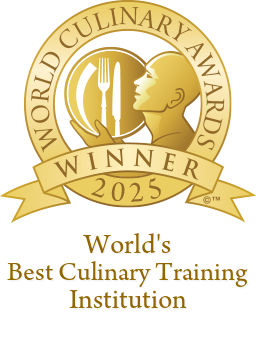The Chef Knife Showdown: santoku vs. chef knife
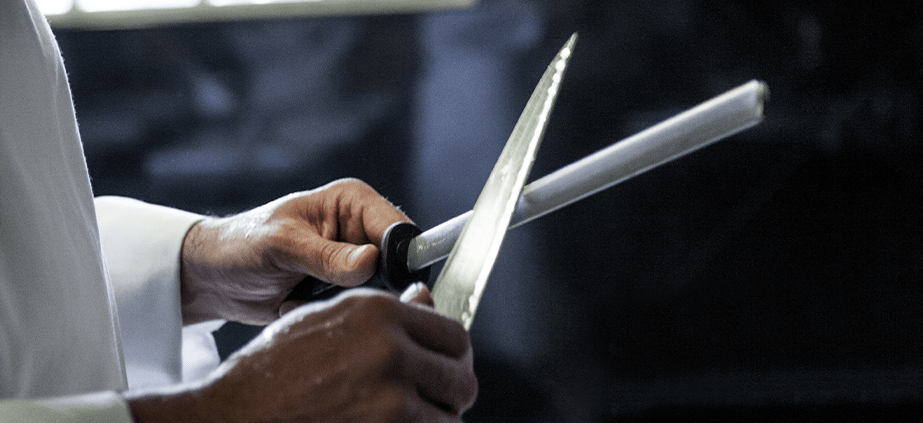
Santoku and chef knives are found in almost every kitchen across the world. Whether used for professional or home cooking reasons, these knives are considered essential pieces of equipment.
If you’re passionate about preparing delicious meals and want to upgrade your kitchen utensils for personal or professional reasons, your main choices may include a santoku or chef knife.
As one of the leading culinary schools in France, our culinary arts degree and programs for career changers equip aspiring and professional chefs with the techniques and knowledge to use various knives.
In this blog, we compare santoku vs. chef knife to offer insight into which may be best for your needs.
The santoku knife vs. chef knife: what’s the difference?
Whether you hope to become a professional chef, are a culinary professional, or desire a career in culinary arts, understanding the key differences between a japanese style santoku knife and a chef knife can enhance your cooking skills. Understanding how both knives can be used can also help you determine which is best for your needs.
As you weigh up santoku vs chef knife, there are several differences to consider. For example:
- The difference between the blade width of a Santoku knife vs chef knife
- The weight of the knives
- The length of the blades
- The shape of the blades
- The food groups they are best suited to.
Depending on how you aim to use your kitchen knife, you may find that a santoku knife is more appropriate. Likewise, you may come to realize that a chef knife is suitable for you.
To help you learn about the differences between the two types of knife, we delve into the santoku knife vs chef knife debate below, offering insight into the advantages of both.
What is a santoku knife? Definition and origins of the santoku knife
Originating from Japan, the word santoku translates to ‘three uses’ in English. So it may come as no surprise that chefs and home cooks frequently use santoku knives for three purposes: chopping, dicing and mincing.
These Japanese knives grew in popularity among professional chefs in Western countries due to their versatility. Their multi-purpose use means you can precisely prepare various ingredients, such as vegetables, fruit, and fish.
These are both single bevel and double-beveled, featuring a blade with a straight edge that curves towards the end and a sharp pointed tip. Not only does this knife edge make them a suitable choice for precision cutting, but it also means they are ideal for fileting and scoring fish.
What is the advantage of a santoku knife?
There are many advantages to using santoku knives, but it’s normal to ask the question: what is a santoku knife used for? As a versatile knife, here are some of the advantages of using this particular knife.
- Santoku knives have more than one use, which can reduce the number of knives you need to own.
- Santoku knives have thinner blades than many other knives, so ingredients can be chopped and diced with accuracy.
- Santoku knives are sharp, ensuring that vegetables and meats can be sliced with precision.
- Santoku knives are light in weight, making it easier to chop and slice.
- These knives are shorter in length than other knives, increasing versatility.
- Santoku knives are available with single and double bevels, so they are often sharper than other knives.
- Santoku knives are made with harder steel, increasing its durability and corrosion resistance.
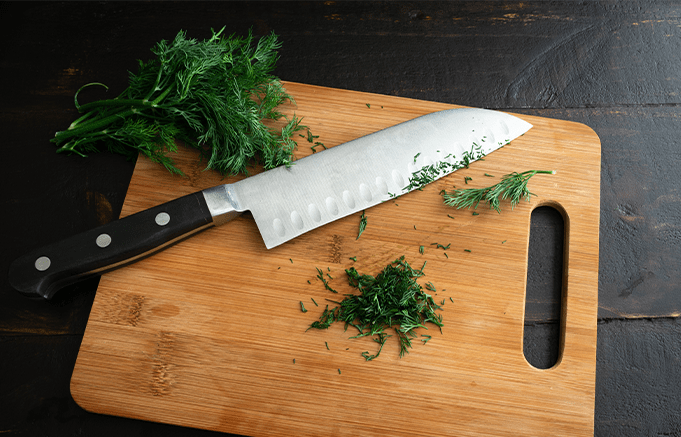
What is a chef knife? Definition and origins of the chef knife
Like santoku knives, chef knives are multi-purpose, so they're suitable for general use by professional chefs and home cooks. However, these western chef knives were not designed to be used this way.
Although stainless steel chef knives are popular across the globe, they were originally designed to carve meat on a large scale, such as sides of beef in Germany.
Contrasting with Santoku knives, this style of knife features a curved, sharp edge. The broad blade usually only has a double bevel edge.
Can you use a chef knife for everything?
When weighing up the question of santoku vs chef knife, learning what a chef knife is best used for can guide your decision. Although this type of western knife was once used to carve large sections of meat, it is now frequently used to:
- Slice, dice, and peel large vegetables
- Cut, dice, and mince poultry, red meat, and game
- Chop and cut herbs
- Crush ingredients such as garlic
- Chop nuts, including walnuts, Brazil nuts, and hazelnuts
- Slice bread.
Chef knives aren’t necessarily suitable for preparing thin slices of meat due to their double bevel and wide blade - they’re simply used as general-purpose knives.
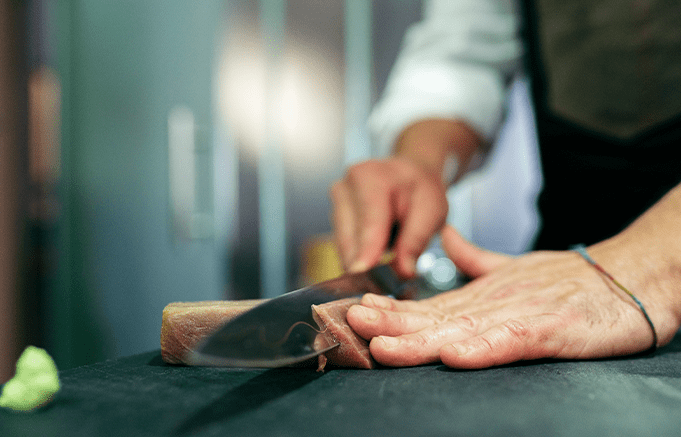
When to think about santoku vs. chef knife
In culinary school, aspiring chefs and those looking for a career change learn how to use a range of knives and where they are best used.
As well as exploring what a santoku knife is used for and what a chef knife is best used for, understanding when to use a santoku vs chef knife can help you determine which is best for your needs.
Santoku knife uses include preparing thinly sliced vegetables, fruits, fish, and meats. Because of their light weight and size, santoku knives offer greater precision. For this reason, using a santoku knife when preparing meals such as ratatouille, salad, or other dishes that include vegetables, fish, and some meats is ideal. You can even use them to prepare fruits that accompany desserts.
Wondering when to use a chef knife? These knives are best used when cutting and dicing larger cuts of meat. They are also more commonly used to cut larger vegetables. So, opting for a chef knife may be best if you’re more likely to be preparing dishes like beef stew or lamb shanks. That said, chef knives are all-around knives, but they may not offer you the precision a santoku knife can.
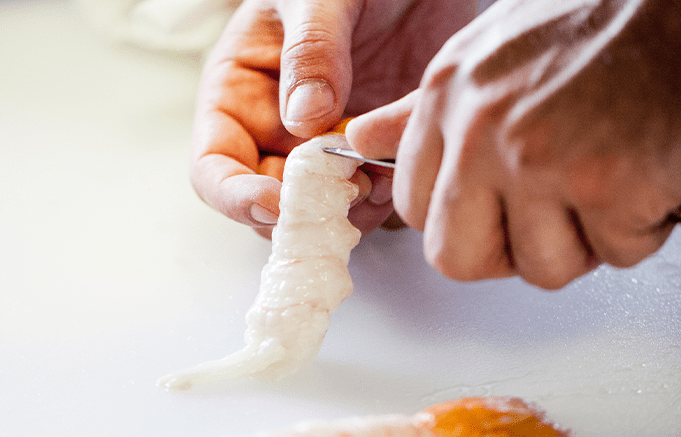
Can a santoku knife replace a chef knife?
With a better idea of what a santoku knife is used for, it’s natural to question if a Santoku knife can replace a chef knife.
However, before swapping your chef knife for a santoku knife, consider how you plan on using it.
To help you decide, here are a few questions to answer.
- Will you primarily prepare vegetables, fruit, and thin slices of meat?
- Do you need a knife that can cut and dice thicker cuts of meat?
- Will you need to debone any meat?
- Are you preparing more sizable vegetables, such as butternut squash, potatoes, and pumpkin?
- Will you be required to cut fine slices?
- Do you want a knife that is lighter in weight?
If you answered yes to questions regarding deboning meat and preparing tougher vegetables such as butternut squash, a chef knife may be better suited to your needs.
But if you won’t be preparing tough meats and vegetables and you’re looking for precision, a santoku knife could replace a chef knife in your kitchen.
Are santoku knives better than chef knives?
Some chefs and home cooks may say that a santoku knife is better. But it all comes down to what you’ll use the knife to prepare. If you’re looking for more control over your knife and want to slice vegetables and meats with extreme accuracy, you may agree that a santoku knife is better than a chef knife.
Santoku vs. chef knife: which should I choose?
Having explored the question of santoku knife vs chef knife, you’ll hopefully have an idea of which is best for your needs. To recap, both knives are suitable for a number of shared purposes. But if you’re hoping to serve perfect thin slices of vegetables, a santoku knife may be the better option for you.
If you aspire to expand your knowledge and become a professional within the culinary arts, culinary arts degrees, and diplomas from our culinary school in France can be the first step in dynamic culinary careers.
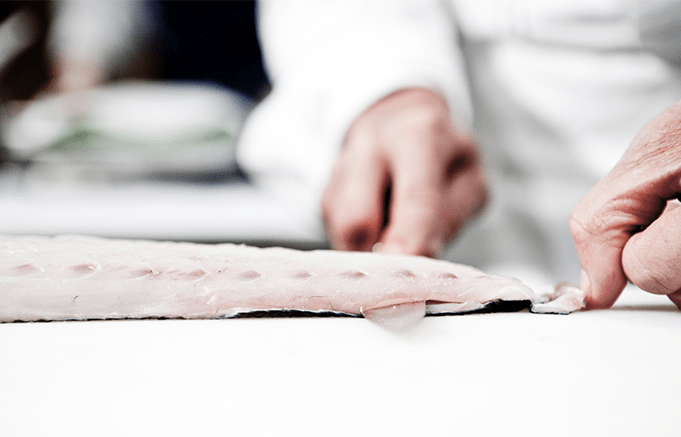
Take the first exciting step in becoming a professional chef today
Combining on-hand training, academic studies, and internships, our bachelor's in culinary arts can provide the training and practical experience needed to become a professional chef.
Perfect your culinary style with our culinary arts diploma
Suitable for those looking to change their career or start their career as a chef, our culinary arts diploma offers insight into techniques, cuisines, and what it takes to manage a restaurant.
To learn more about what you can do with a culinary degree or whether being a chef is a good career choice, take a look at some of our blogs here.


